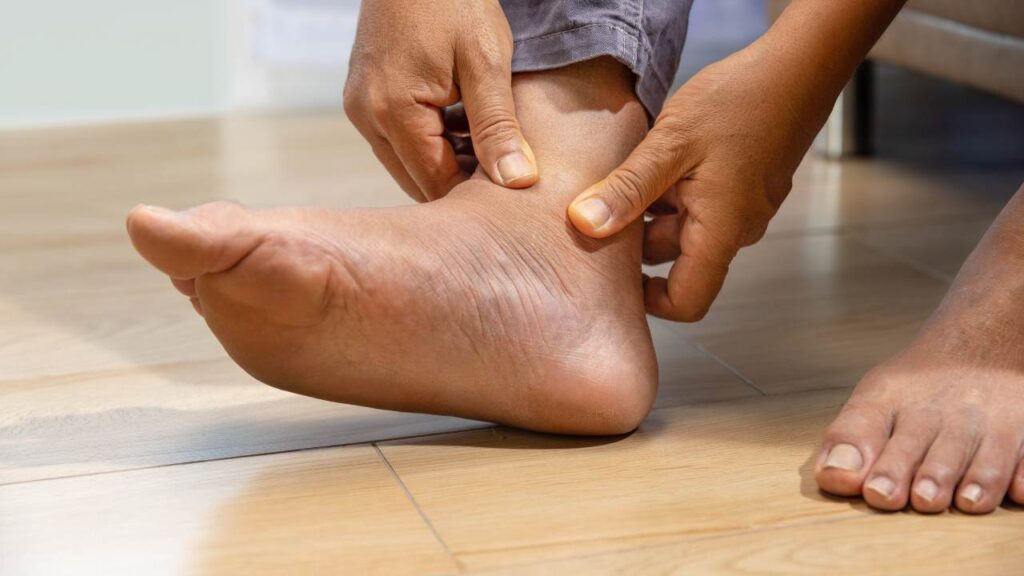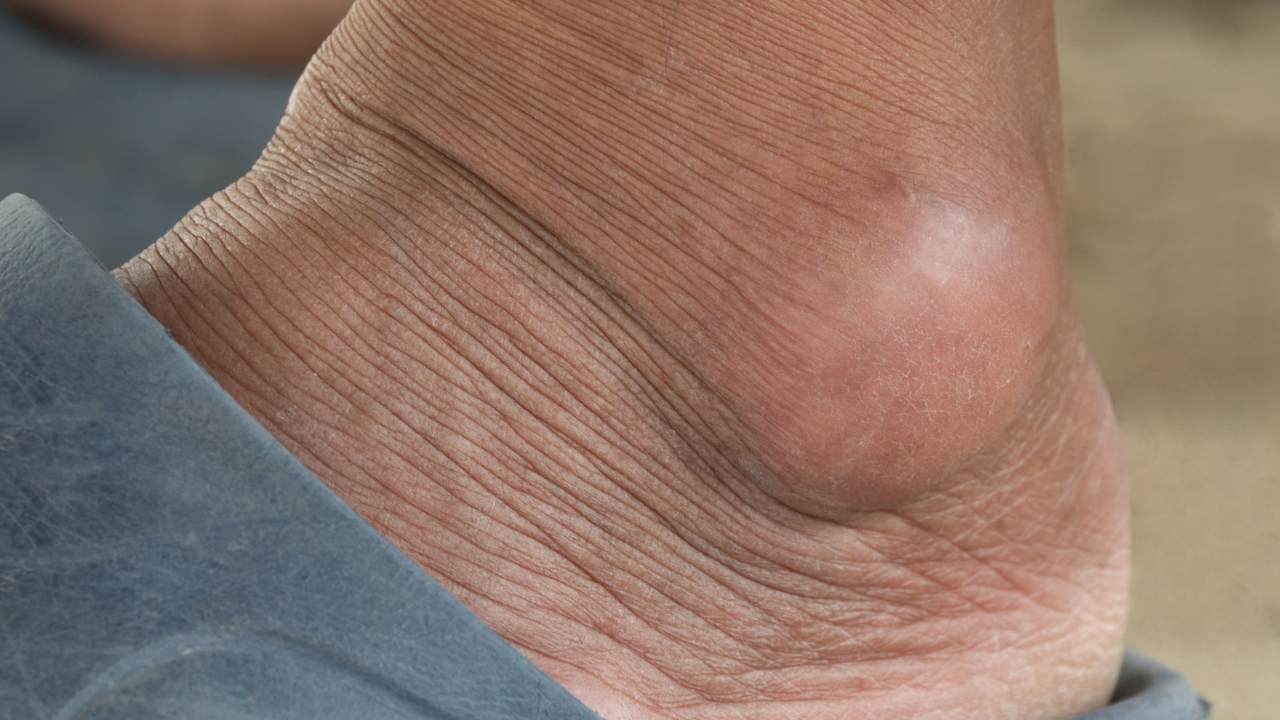Hello, I’m Amos, and this is the story of my journey with gout – a journey from confusion and pain to understanding and managing this challenging condition. My first encounter with gout came without warning, transforming an ordinary day into one I’ll never forget. It started as a nagging discomfort in my big toe, a sensation so common that I brushed it off as a minor strain from my daily activities.
However, this was no ordinary pain. As hours turned into a restless night, the pain intensified, turning every slight movement into an excruciating ordeal. That was the moment I knew something was seriously wrong. It wasn’t just a sore joint; it was something that demanded immediate attention and care.
This blog is more than just a recount of my experiences; it’s a window into the life of someone grappling with gout. It’s a tale of the unexpected twists and turns of living with a condition often misunderstood and underestimated in its capacity to affect one’s life. Through my story, I hope to shed light on the reality of gout – the pain, the frustration, and the relentless quest for relief. But more importantly, this is a story of resilience and adaptation, of learning to live with and manage a condition that tests your limits in ways you never imagined.
Join me as I take you through the highs and lows of my gout journey, sharing the lessons learned, the strategies developed, and the silver linings discovered along the way. It’s a path marked by challenges, but also by significant milestones of understanding, acceptance, and overcoming. Welcome to my world of living with gout, a painful yet enlightening reality.
The Day Gout Knocked on My Door

It was a day like any other until it wasn’t. The sun was shining, birds chirping, and there I was, ready to seize the day. But life had other plans. It began with a twinge in my big toe, a peculiar discomfort that quickly spiraled into a pain so intense, it felt as if my toe was trapped in a vice. Every step was a chore, each movement sending shockwaves of sharp, burning pain through my foot. It was as if my toe had become a beacon of agony, throbbing relentlessly.
Confusion set in as I tried to piece together what could have caused such sudden and severe pain. I hadn’t injured myself, nor had I engaged in any unusual physical activity. It was bewildering, this unexplained assault on my body, leaving me grappling for answers. Denial was my first response. I convinced myself it was just a bad strain or perhaps I’d stubbed my toe without realizing it. But deep down, I knew it was something more.
Fear crept in as the pain refused to subside. Sleep became elusive, with each turn in bed bringing a fresh wave of discomfort. I watched the clock tick, each second a reminder of the persistent pain and my growing helplessness. Frustration mounted as I realized this wasn’t a simple issue that would resolve with a good night’s rest. It was a wakeup call, loud and clear.
Seeking medical advice was my next step. The visit to the doctor was filled with anxiety. As I limped into the clinic, I was a mix of hope and dread – hoping for a simple explanation but dreading the possibility of a chronic condition. The diagnosis came like a blow: gout. The word itself was foreign, almost unreal. Gout? How did I, of all people, end up with it?
The doctor’s explanation was thorough, but my mind was in a whirl. Uric acid, crystals in the joints, dietary triggers – it was a lot to take in. I left the clinic armed with prescriptions and a slew of pamphlets, but also with a heavy heart. This was just the beginning of a journey I never planned to take, a journey into the world of living with gout.
Gout 101 – Learning About My Condition
When I first heard the word ‘gout’, it was shrouded in a veil of mystery and misconceptions. I vaguely associated it with historical figures and lavish lifestyles, but I was soon to learn how much more there was to this condition.
Gout, I discovered, is a form of inflammatory arthritis, caused by an excess of uric acid in the bloodstream. This excess leads to the formation of tiny crystals around joints, causing intense pain and swelling – a reality I was all too familiar with. The primary culprit, as my doctor explained, is the breakdown of purines, substances found in many foods. High-purine foods like red meat, seafood, and alcohol can trigger gout attacks, but it’s not just about diet. Factors like genetics, dehydration, obesity, and certain medications also play a significant role.
I was surprised to learn that gout is more common than I thought, and it’s not just a ‘rich man’s disease’ as I had previously believed. This revelation was both a relief and a wake-up call. I had to let go of the myth that gout was a result of overindulgence or a lack of self-control. It’s a complex condition influenced by various factors, many beyond an individual’s control.
Understanding gout was just one part of the equation. Living with it was another. The physical pain of gout was undeniable, but I was unprepared for the emotional and psychological toll it would take. Each flare-up brought not just physical discomfort but also a sense of anxiety and helplessness. There were days when the fear of a looming attack would overshadow everything else. Social events became sources of stress, with every meal or drink a potential trigger.
I had to navigate the terrain of managing pain while also dealing with the frustration, anxiety, and sometimes even depression that came with it. Gout wasn’t just a physical ailment; it was a condition that challenged my mental resilience. But as I delved deeper into understanding gout, I also began to uncover the ways to live with it, not just as a patient, but as a person seeking a balanced and fulfilling life despite the challenges.
Adjusting My Lifestyle – Diet and Beyond

Embracing my diagnosis meant re-evaluating and adjusting my lifestyle, starting with my diet. My journey into the world of dietary management was both challenging and enlightening. I learned that foods high in purines, like red meats, certain seafood, and even some vegetables, were now on my ‘eat with caution’ list. Beer and spirits, which I enjoyed in moderation, became occasional indulgences due to their potential to trigger flare-ups.
In place of these, my diet welcomed new favorites. Cherries and cherry juice, touted for their anti-inflammatory properties, became regulars in my meals. Dairy products, particularly low-fat options, and plant-based proteins like lentils and beans, found a prominent place on my plate. Whole grains, vegetables, and nuts also became staples, transforming my meals into a palette of gout-friendly options.
Exercise and physical activity underwent a transformation too. The myth that exercise worsens gout was quickly dispelled by my doctor. In fact, maintaining a healthy weight is crucial in managing gout. I found activities that were gentle on my joints yet effective – swimming, cycling, and yoga became my go-to routines. These not only helped in managing my weight but also improved my overall well-being.
Hydration emerged as a key player in my new lifestyle. Drinking plenty of water became a priority, helping to flush out excess uric acid and reduce the risk of crystal formation. I also learned the importance of other lifestyle adjustments – like reducing stress, which can exacerbate gout symptoms, and ensuring adequate sleep to aid in overall health and well-being.
These lifestyle changes weren’t just about avoiding pain; they were about embracing a healthier way of living. It was a process of trial and error, learning what worked for my body and what didn’t. But every small change was a step towards managing my gout more effectively and living a life not defined by it.
Treatment and Management – My Path to Relief
Navigating the waters of gout treatment was an integral part of my journey. It was a path marked by experimentation, advice from healthcare professionals, and my own body’s responses.
Medications were a cornerstone of my treatment plan. Allopurinol, a drug that helps reduce uric acid production, became a daily part of my routine. During acute flare-ups, nonsteroidal anti-inflammatory drugs (NSAIDs) provided much-needed relief from the intense pain and swelling. However, medication was just one piece of the puzzle. It was vital to balance pharmaceutical intervention with lifestyle changes to manage my gout effectively.
In addition to conventional medicine, I explored natural remedies. Supplements like fish oil and turmeric, known for their anti-inflammatory properties, became regular additions to my diet. I also experimented with apple cider vinegar and lemon water, touted for their alkalizing effects on the body. While these natural remedies didn’t replace my medications, they complemented them, offering additional support in managing my condition.
Alternative therapies also found their way into my management plan. Acupuncture and massage therapy, for instance, provided not only physical relief but also mental relaxation, which I learned was crucial in managing a chronic condition like gout.
Regular medical check-ups were essential. These visits weren’t just about getting prescriptions; they were opportunities to monitor my uric acid levels and assess the effectiveness of my treatment plan. Regular blood tests became a norm, providing a clear picture of how well my lifestyle changes and medications were working.
Perhaps one of the most crucial skills I developed was learning to recognize the signs of an impending gout attack. The slight twinge in my toe, the subtle swelling, or the faint sense of discomfort were now signals for me to take proactive steps. This could mean adjusting my diet, increasing my water intake, or resting the affected joint. Being attuned to these early signs helped me manage potential flare-ups better and often reduced their severity.
My path to relief wasn’t linear. It involved constant learning and adaptation, but each step forward was a stride towards taking control of my gout, rather than letting it control me.
Coping Mechanisms and Support Systems
Living with gout wasn’t just a physical battle; it was an emotional and mental one as well. Chronic pain and the unpredictability of flare-ups brought their share of stress and anxiety. There were days when the constant pain seemed to cloud every aspect of my life, casting a shadow over even the simplest activities. I quickly learned that taking care of my mental health was as crucial as managing the physical symptoms.
One of the most significant sources of strength during these times was the support I received from family and friends. Their understanding and patience were invaluable, especially on days when gout seemed to take over. They were there to offer a helping hand, whether it was assisting with chores when I was unable or simply lending an ear when I needed to vent my frustrations. Their empathy and support were constant reminders that I wasn’t in this alone.
Connecting with others who were also living with gout opened up a new world of understanding and camaraderie. I joined gout support groups, both online and in my local community. These groups provided a platform to share experiences, tips, and encouragement. Hearing stories from others who were navigating the same challenges was incredibly reassuring. It was comforting to know that my struggles were understood and shared by others.
These communities also served as a rich resource for new coping strategies and advice. From dietary tips to managing flare-ups, the collective wisdom of these groups was a treasure trove of practical knowledge. It was in these groups that I learned about the importance of staying active, practicing mindfulness, and exploring hobbies that kept my mind engaged and spirits lifted.
The emotional and mental aspect of living with gout taught me resilience in ways I never expected. It reinforced the importance of self-care, not just in the form of diet and medication, but also in nurturing my mental and emotional well-being. My support network – family, friends, and fellow gout sufferers – played an indispensable role in this journey, helping me navigate the highs and lows with a sense of hope and togetherness.
Living with Gout – My New Normal
Accepting gout as a part of my life was a journey in itself. It wasn’t about surrendering to the condition, but rather about recognizing its presence in my life and learning to coexist with it. This acceptance didn’t happen overnight; it was a gradual process marked by setbacks and victories. But it was through this acceptance that I found a way to not let gout define me. I am not just a person with gout; I am much more, and this condition is just one aspect of my life.
Maintaining a positive outlook has been essential in this journey. I learned to celebrate the small victories – a day without pain, a successful dietary change, or simply the ability to carry out my daily activities. Gratitude became a daily practice, focusing on what I could do rather than what I couldn’t. This mindset shift didn’t mean ignoring the challenges gout brought, but it meant recognizing and appreciating the good in my life, however small it might seem.
Staying motivated required both internal and external efforts. Setting small, achievable goals helped me stay focused and gave me a sense of accomplishment. Whether it was trying out a new gout-friendly recipe, walking an extra block, or simply staying hydrated throughout the day, these goals kept me engaged and moving forward.
The lessons I’ve learned along this journey have been transformative. I’ve learned the importance of listening to my body and responding to its needs. Self-care became a priority, not just in the context of managing gout, but in all aspects of my health. This experience has also taught me the value of resilience and adaptability. Life with gout is unpredictable, but learning to adapt to its ebbs and flows has made me stronger and more resilient.
Perhaps the most significant change has been in my perspective on health and life. Health is not just the absence of disease; it’s a holistic state of well-being. My journey with gout has taught me to take a more comprehensive approach to my health, considering not just the physical, but also the mental and emotional aspects.
Living with gout is my new normal. It’s a path filled with continual learning and adaptation. But it’s also a journey of growth, resilience, and an ever-deepening appreciation for the intricate complexities of life and health.

